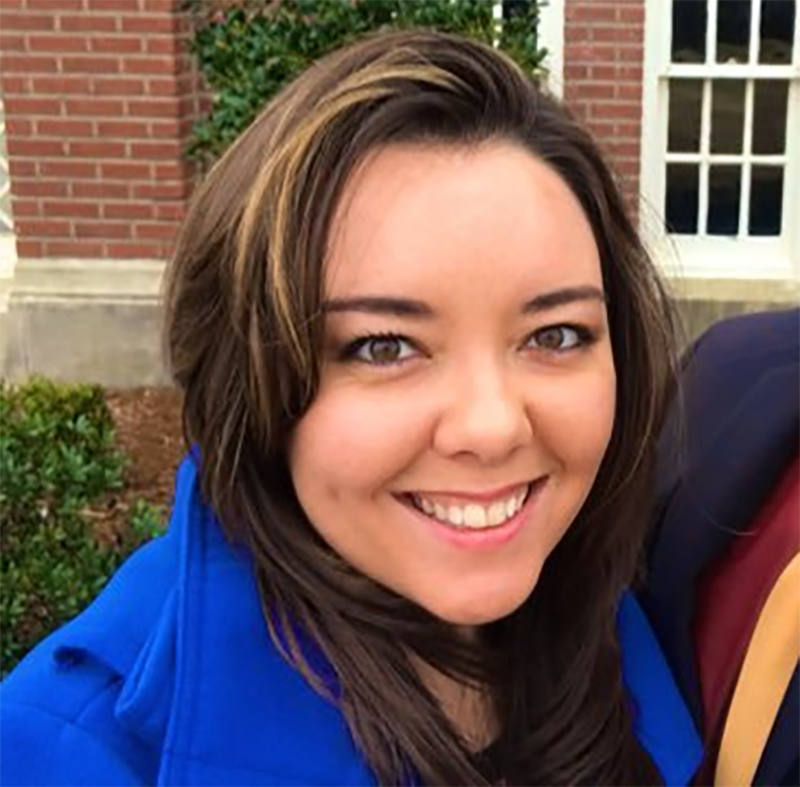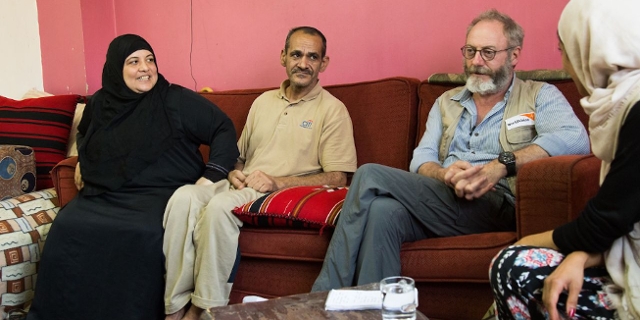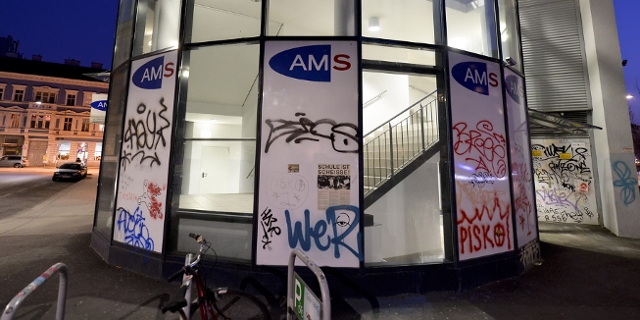Jackie Fortiér on the Opioid Crisis in the US
Jackie Fortiér is a health reporter for State Impact Oklahoma and FM4 Reality Check’s Steve Crilley asked for her impression of that trial and its legacy for the opioid crisis in the US.

FM4
Das ausführliche Gespräch mit Jackie Fortiér gibt es im FM4 Interview Podcast.
Steve Crilley: Sitting in that Oklahoma court room, you must have heard countless testimonies from people. Is there maybe one person’s account of what happened to them that sticks with you, that exemplifies this crisis?
Jackie Fortiér: Yeah. I was the only reporter who was in the trial for the full seven weeks here. And, there was one woman who testified, she is a foster mom and runs an adoption and fostering nonprofit (organization) in Oklahoma. And she fosters a lot of children that are born with neonatal abstinence syndrome. These are children whose mothers were on opioids while they were pregnant with them. We’re really just learning about the effects that this has on a child. These babies have a lot of problems. I mean they cry for extended periods of time. We’ve seen in the US the number of children in foster care has just skyrocketed and Oklahoma is the same. So her describing the children that she’s fostered, some of whom she ended up adopting with her husband, and really what the babies go through with neonatal abstinence syndrome, it was just really heart-wrenching.
Steve Crilley: And the court case itself, how did the lawyers for Johnson and Johnson defend their case?
Jackie Fortiér: It was interesting. Whenever someone was on the stand who had talked about any personal implications of the opioid crisis on their own lives, when they were cross-examined by Johnson and Johnson lawyers, the lawyers would make a point to ask: „Was it a Johnson and Johnson product that you were addicted to (or the family member that you’re speaking of)?“ And at no time in the trial did someone say “yes, it was definitely a Johnson and Johnson product”. Usually they didn’t know.
Steve Crilley: Is that why the judge only fined Johnson and Johnson some $572 million? Because the state was seeking damages of a whopping $17.5 billion.
Jackie Fortiér: That’s exactly right. The judge said in his decision that the state had only proven really one year’s worth of abatement. He said that Johnson and Johnson engaged in this deceptive marketing of opioids. But for some reason the judge decided that that amount of money, that $572 million was the total amount that he would make Johnson and Johnson pay. It’s to be determined (in the future) if the legislature might be able to make a statutory change and go after a little bit more money. So, there’s really some lingering questions.
Steve Crilley: It’s also interesting, Jackie, because Purdue, another drug company and its owners offered up to $12 billion for lawsuits against them yesterday. That, I guess, is interesting timing.

Jackie Fortiér
Jackie Fortiér
Jackie Fortiér: Well, Purdue was initially one of the defendants in Oklahoma and they settled with Oklahoma for $270 million at the end of March. So, this federal case that you’re referencing in Ohio, that’s the much larger consolidated case that has about 2,000 municipalities, tribes, communities that have signed on to that. I thought it was really interesting that Purdue said that they might be willing to settle the day after the Johnson and Johnson verdict came out. I think that the Johnson and Johnson verdict will definitely bring more companies to the table because this is only $572 million that Johnson and Johnson might have to pay in Oklahoma. I mean, obviously they’re going to appeal it, but that’s only for one state. So, if you start doing the math, you know, these drug companies are looking at it and (maybe thinking), you know what, maybe it might be worth it to settle. Then we can just keep doing what we’re doing. It gets our name out of the mud. Or at least out of the headlines for a little while and we won’t have all this litigation going on.
Steve Crilley: Are things any better now for people who need to go on painkillers? Are there situations that will stop them becoming addicted?
Jackie Fortiér: I don’t think things have changed in Oklahoma since even that Purdue settlement in March. And the reason why I say that is the Purdue settlement in Oklahoma was $200 million, which is after the lawyers take their fees. It was going to go to an addiction treatment and research center at Oklahoma State University in Tulsa. And that has yet to be formed. They’re still figuring out board members. After that settlement happened, the state legislature was not happy that Oklahoma attorney general, Mike Hunter had basically decided where the money was going and hadn’t asked the legislature for their opinion. So, they passed a law saying that any settlement or judgment would have to go through the state’s general fund.
And when the money from the Johnson and Johnson settlement comes in... the fact that it has to go into the general fund means that the state lawmakers will then ultimately be making the decision about where that money goes. And this is similar to what happened with the tobacco settlements in the nineties; a lot of that money did not go to tobacco cessation and we’ve seen that over time. So, whether this money actually goes to treatment, you know, medication-assisted treatment, I mean, we don’t know yet. Frankly it could go to fill potholes ... that’s really going to be up to the legislature.
Steve Crilley: Is it quite evident the extent of this crisis when you go from town to town across your state?
Jackie Fortiér: I think there’s a multifaceted answer. A lot of the problems in the rural United States stem from the fact that there are not very many jobs and the jobs that are there, are pretty low-paying. So, a lot of the small towns, especially in Oklahoma, have been shrinking. A lot of young people leave, go to the metro areas or leave the state in order to find jobs. So, they’ve been suffering for a while. Meth, methamphetamine is also a very big problem in the rural United States, especially basically Oklahoma West.
So, there’s a lot of reasons I think why people maybe have a sense that they want an escape and could potentially, you know, get hooked on, some sort of illicit drug, whether it be opioids or something else. When I travel around the state, I don’t see a lot of overt signs of an opioid crisis, but you see a lot of people who are suffering when you just start asking questions and you know, you get inside someone’s home. I think one thing that’s really interesting about the opioid crisis within the United States is that a lot of people who are addicted to opioids, they still have jobs. It’s not that they can’t work sometimes, they can still hold down jobs. I did an interview with a man a few months ago and his wife works for the state government in Oklahoma City. He has been addicted to opioids for over 10 years and he knows that they’re not able to get treatment, which is why I was talking to him. But he still holds down a job. He’s married. It’s not quite as maybe obvious or physically overt as you might think it is.
Publiziert am 29.08.2019




















